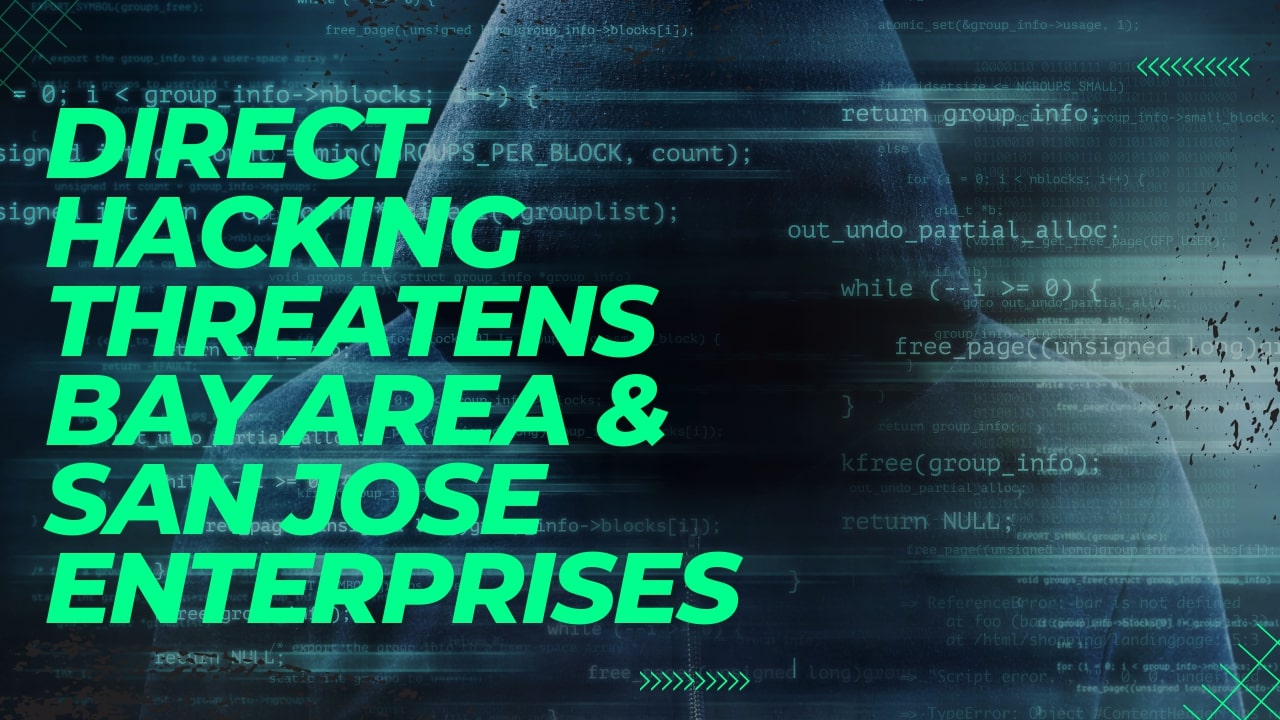Direct Hacking Threatens Bay Area & San Jose Enterprises
Cybersecurity isn’t as simple as it once was.
With the last decade’s advances in business, technology comes with a new range of considerations that must be made continually to ensure reliable cybersecurity for a business like yours.
The more complex your IT systems get, the more opportunities cybercriminals have to break in.
Setup a meeting with the V&C Solutions team to discuss how your cybersecurity needs to be improved.

Bay Area & San Jose Enterprises Have Never Been More Vulnerable
The point is that cybercriminals have an extensive arsenal of weapons to attack with. Are you hoping your lone firewall will be enough to keep you safe from all of them?
The hard truth is that cybercrime has never been more prevalent or dangerous—in the past two years, the rate of attacks has increased by 600%.
Many businesses have been breached and don’t even know it yet. Often, it can take organizations an average of 207 days to identify data breaches without the right tools.
Worst of all, the modern wave of cybercrime targets small businesses more than any other sector of the market—43% of attacks victimize smaller organizations.
Your Systems May Be Vulnerable To Direct Hacks
You hear a lot about cybercrime threats like phishing and ransomware but not as much about direct hacks anymore. While the former is certainly a serious threat to modern businesses, you can’t overlook the other, more straightforward attack vectors in play.
If you don’t have properly configured, monitored, and updated systems, hackers may be able to break into your IT environment directly. No phishing emails or social engineering tricks—they target and break your simple (or nonexistent) defenses.
That was the case for a new client of ours. They enlisted our expert support after suffering a major data breach. When we analyzed their systems, we found a range of key issues:
- Unsecured endpoints
- Out-of-date systems
- Improperly configured security controls
This long list of vulnerabilities gave cybercriminals several ways to get into their systems. Are you sure you don’t have the same weaknesses?
The Most Common Direct Hacks Targets
Internet-Facing Vulnerabilities
Any system connected to the Internet is at risk—including business networks, remote users with VPNs, cloud applications, and everything in between.
Cybercriminals will target these systems, looking for unpatched and out-of-date infrastructure and exposed Remote Desktop Protocol (RDP) connections. Protecting against these types of threats means implementing a vulnerability management program.
Old Technology
Sticking with old technology may save you some money in your IT budget, but its lack of functionality and security can slow down your business and put you at risk. This is what IT pros call “end of life.”
End Of Life means no more bug fixes or security updates for the hardware or software l—it’s the end of support delivered by the manufacturer. Over time, there will be a loss of usability and increased vulnerability.
While it may work fine right now, it won’t be long before it becomes a problem.
Unpatched Systems
Did you know that the most common way cybercriminals get into a network is through loopholes in common third-party programs?
That means the computer programs you rely on to get work done daily could leave you vulnerable to security breaches. With new threats arising all the time, it’s imperative that your application and system software is up to date.
Unfortunately, software patches can be time-consuming and complicated; most of us just end up clicking the “Remind Me Later” button instead of sitting through an often-inconvenient update process.
Exploited System Administration Tools
As networks grow and systems become ever more connected, abuse of system administration controls has become more dangerous.
These tools are already installed on systems, and once a cybercriminal has access to them, they can easily deploy viruses and malware.
Zero-Day Hacks
This method takes advantage of a security vulnerability before the vulnerability becomes generally known (i.e., there are zero days between the time the vulnerability is discovered and the first attack).
Your Bay Area Or San Jose Enterprise Needs Multiple Layers Of Cybersecurity
You can’t just “set and forget” a firewall as you could’ve 15 or 20 years ago; true cybersecurity in today’s business world calls for non-stop adaptation to emerging threats.
V&C Solutions knows that while the “perimeter” was once adequately protected by a corporate firewall alone, this simply doesn’t account for all that data in your business today.
Cloud technology, mobile computing, and more require implementing security in layers to effectively protect your ever-changing perimeter.
We’ll Protect You With A Multi-Layered Approach To Security
The V&C Solutions team believes that the only way to develop cybersecurity effectively is through a fully managed approach that builds a culture of best practices in combination with a range of carefully chosen technologies.
We can provide managed security solutions that address your company’s specific needs and cost-effectively do this.
You can’t afford to assume that your cyber security measures and practices are keeping you safe. You need to know for sure.
Get in touch with the V&C team to start improving your cybersecurity.




